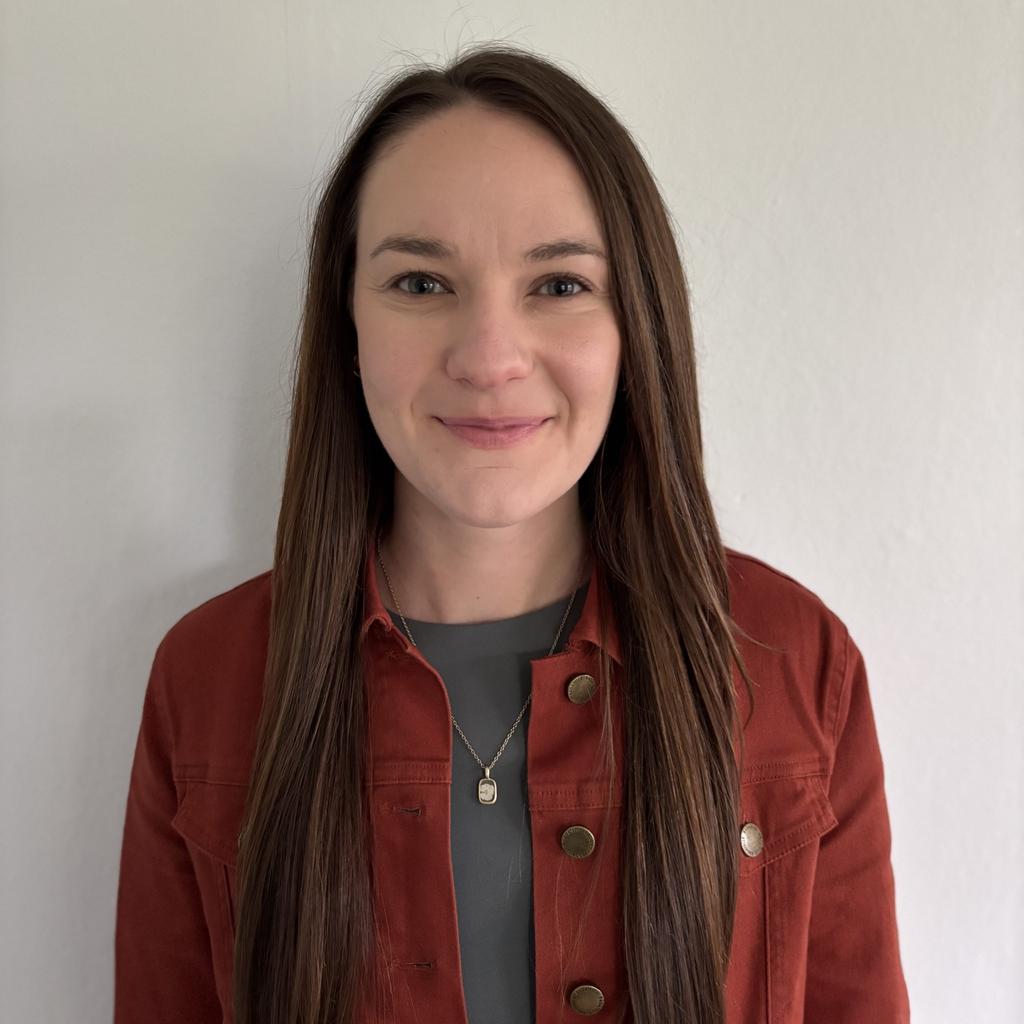Why this resume works
- Highlights industry-specific skills: The applicant’s trend analysis and inventory management abilities align with the fashion industry, showcasing a solid fit for roles demanding these specialized skills.
- Quantifies accomplishments: By outlining measurable accomplishments like reducing costs by $50,000 and launching 30 new products, the applicant effectively communicates their impact and value.
- Uses action-oriented language: Strong action verbs such as “increased,” “negotiated,” and “launched” convey initiative and effectiveness.
More Fashion Merchandiser Resume Examples
Take a look at our fashion merchandiser resume examples to learn how to highlight your design sense, market analysis skills, and trend forecasting. These fashion resume samples will help you create a resume that stands out in the fashion industry.
Entry-Level Fashion Merchandiser
Why this resume works
- Centers on academic background: Emphasizing a master’s degree in fashion merchandising, the education section shows the applicant’s solid academic foundation important for early-career professionals.
- Shows digital literacy: By using data analytics to forecast trends, the applicant showcases computer skills essential for digital readiness in modern workplaces.
- Effective use of keywords: Strategically integrating keywords like “trend analysis” and “vendor negotiation” improves the resume’s chances of passing applicant tracking systems (ATS) and standing out to hiring managers.
Mid-Level Fashion Merchandiser
Why this resume works
- Demonstrates language abilities: The applicant’s language skills foster cross-cultural communication in fashion merchandising.
- Points to measurable outcomes: By citing quantifiable achievements like increasing sales by 15% and improving client satisfaction by 20%, the applicant reveals their powerful contributions to retail success.
- Includes a mix of soft and hard skills: The mix of trend analysis expertise and effective interpersonal skills showcases a balance of analytical and interpersonal strengths in driving fashion retail growth.
Experienced Fashion Merchandiser
Why this resume works
- Showcases impressive accomplishments: Showcasing accomplishments like a 20% sales increase and industry-wide strategy adoption, the applicant’s achievements emphasize senior-level performance.
- Focuses on work history: Using a chronological resume format with detailed work history, the applicant effectively highlights extensive career experience.
- Sections are well-organized: The well-organized sections feature clear headers and concise bullet points, making this resume easy to scan.
Fashion Merchandiser Resume Template (Text Version)
Jane Rodriguez
Pinehill, TX 75759
(555)555-5555
Jane.Rodriguez@example.com
Professional Summary
Experienced fashion merchandiser with 6 years in trend analysis, inventory management, and visual merchandising. Increased sales by 15% and optimized inventory turnover by 12%. Skilled in vendor relations and market research.
Skills
- Trend Analysis
- Inventory Management
- Product Placement
- Vendor Relations
- Sales Optimization
- Visual Merchandising
- Market Research
- Cost Negotiation
Certifications
- Certified Fashion Merchandiser – National Retail Federation
- Retail Management Certificate – American Management Association
Education
Master of Professional Studies Fashion Merchandising
Fashion Institute of Technology New York, NY
June 2017
Bachelor of Arts Retail Management
University of California, Los Angeles Los Angeles, CA
June 2015
Work History
Fashion Merchandiser
Chic Trends – Pinehill, TX
September 2022 – September 2025
- Increased sales by 15% through strategic product placement.
- Analyzed customer trends to optimize inventory turnover by 12%.
- Organized visual displays, leading to 10% higher engagement.
Retail Buyer
StyleBox Inc. – Pinehill, TX
June 2019 – August 2022
- Negotiated contracts reducing costs by $50,000 annually.
- Curated seasonal collections enhancing customer satisfaction.
- Managed relationships with 20+ vendors ensuring supply consistency.
Product Development Specialist
TrendWave LLC – Houston, TX
July 2017 – May 2019
- Launched 30 new products, increasing revenue by 20%.
- Collaborated with design team, improving product quality by 15%.
- Monitored market trends, boosting sales by adapting to demand.
Languages
- Spanish – Beginner (A1)
- French – Beginner (A1)
- Italian – Beginner (A1)
Related Resume Guides
Advice for Writing Your Fashion Merchandiser Resume
Dive into our advice section on how to write a resume for a fashion merchandiser job and discover how to highlight your flair for trends, inventory management, and brand collaboration. Whether you’re curating stylish collections or driving sales strategies, these tailored tips will help you stand out in the vibrant world of fashion merchandising.
Showcase your portfolio or projects
For a fashion merchandiser, including a portfolio or projects on your resume is essential. A portfolio allows you to visually showcase your creativity, trend awareness, and eye for design—qualities that words alone can’t always capture. Think of it as a visual extension of your resume that gives employers real examples of your work, from forecasting trends to designing displays or creating engaging product presentations.
Whether you host your portfolio on an online platform like Behance or Dribbble, or on your personal website, make sure it’s easy to navigate and highlights your strongest pieces.
Don’t hesitate to include freelance work, school projects, or personal design experiments—these can demonstrate your range and initiative. For each project, list the title, any clients or collaborators, and a brief description of what you created. Emphasize your specific contributions and the results or impact of your work, such as increased engagement or improved visual appeal.
By curating a thoughtful and accessible portfolio, you give employers a clear sense of your talent, versatility, and ability to translate creative concepts into tangible results.
Example of a projects section
Seasonal Collection Launch
Urban Threads
March 2022
- Coordinated the launch of the Spring/Summer collection, driving a 30% increase in sales within the first month.
- Developed visual merchandising strategies that improved store aesthetics and customer experience.
- Collaborated with designers to ensure alignment with market trends and consumer preferences.
E-commerce Merchandising Strategy
Chic Avenue
October 2021 – February 2022
- Implemented an online merchandising strategy that boosted website traffic by 20%.
- Optimized product listings through detailed analysis of shopping patterns and competitor positioning.
- Worked closely with digital marketing teams to synchronize promotional efforts across platforms.
Get ideas fast by looking at our professional resume examples. They show you how to organize your resume with successful designs.
Emphasize your most relevant skills
As a fashion merchandiser, it’s important to highlight both technical and soft skills on your resume. Technical skills might include using design software such as Adobe Illustrator or Photoshop to create layouts or visual concepts.
Soft skills like creativity, communication, and teamwork are equally valuable, helping you collaborate effectively and generate innovative ideas. A mix of both shows that you’re adaptable and capable of managing different aspects of the role.
Including a dedicated skills section makes it easy for employers to quickly assess your abilities. List relevant software tools, along with artistic or analytical strengths that reflect your versatility—such as visual merchandising, trend analysis, or product selection. This section gives hiring managers an at-a-glance understanding of what you bring to the table.
You can strengthen your resume even more by weaving these skills into your work experience descriptions. For example, instead of simply stating that you worked on store layouts, highlight how your creative approach led to more engaging displays and increased sales.
This strategy demonstrates how you’ve applied your skills in real-world scenarios, giving employers a clear sense of your value as a fashion merchandiser.
Fashion merchandisers should select a resume format that highlights their trend analysis, product planning, and retail expertise prominently.
Choose a professional resume template
When choosing a resume template for a fashion merchandiser role, it’s important to find one that combines creativity with professionalism. Look for templates that have a clean and structured layout. This helps your information stand out clearly and ensures your skills and experience are easy to read.
Avoid overly decorative designs as they can distract from the content of your resume. A template with a good visual hierarchy will guide the reader’s eyes naturally through your qualifications.
It’s also smart to pick a format that’s optimized for applicant tracking systems (ATS). Many companies use ATS software to scan resumes before they reach hiring managers, so simple, text-focused formats often work best.
Templates that avoid complex graphics or unusual fonts are more likely to pass through these systems smoothly. Remember, you want your creativity and skills in fashion merchandising to shine through, not be overshadowed by an overly fancy design.
Create your standout fashion merchandiser resume easily! Use our Resume Builder to highlight your skills and experience in the fashion industry.
Format your resume properly
For a fashion merchandiser role, select a chronological resume format if you have extensive experience. This approach highlights your career journey and key roles over time, allowing potential employers to easily see how your past work aligns with their needs, showcasing your growth in the industry effectively.
5 resume formatting tips
- Structure with clear headings: Include sections like ‘Work Experience’ and ‘Skills’ for straightforward navigation.
- Choose readable fonts: Opt for fonts like Arial or Calibri in 10-12 pt size to improve readability.
- Use bullet points: List skills and achievements using bullet points for easy scanning.
- Limit to one page: Keep your resume to one page unless you have extensive experience.
- Ensure proper spacing and alignment: Maintain consistent margins and spacing for a clean, professional appearance.
You can use our ATS Resume Checker to scan your resume for potential issues and receive on-the-spot feedback to improve your resume score.
FAQ
Do I need to include a cover letter with my fashion merchandiser resume?
Including a cover letter with your fashion merchandiser resume can make a significant difference. A cover letter lets you highlight your passion for fashion and explain why you’re drawn to a particular brand or company, making your application more memorable.
For instance, if you’ve worked on a successful merchandising campaign or have experience with trend forecasting, you can detail this further in the cover letter.
Consider using our Cover Letter Generator to craft an effective cover letter that complements your resume by providing structure and content ideas tailored to the fashion industry.
Additionally, reviewing various cover letter examples specific to fashion merchandising can offer inspiration and help you refine your approach.
How long should a fashion merchandiser’s resume be?
For a fashion merchandiser, a one-page resume is usually sufficient to highlight key skills such as trend analysis, visual merchandising, and vendor negotiation.
This format helps you present your most relevant experience concisely, focusing on recent roles that demonstrate your expertise in the fast-paced fashion industry.
However, if you possess extensive experience or have held multiple significant positions within large brands or retailers, a two-page resume might be more appropriate.
This allows room to detail achievements and contributions without omitting important information that showcases your professional growth.
Check out our guide on how long a resume should be for further insights and examples tailored to various career stages in fashion merchandising.
How do you write a fashion merchandiser resume with no experience?
When crafting a resume with no experience for a fashion merchandiser role, emphasize your relevant skills, education, and any experiences that can showcase your potential. Highlight how these elements position you to succeed in the industry. Here are a few tips:
- Highlight educational background: If you’ve studied fashion or business, feature your degree prominently. Mention coursework or projects related to merchandising, such as visual display design or trend analysis.
- Leverage internships and volunteer work: Include any internships in retail or volunteer roles at fashion events where you gained insights into merchandising practices. Detail responsibilities like assisting with displays or inventory management.
- Showcase transferable skills: Emphasize skills like trend forecasting, visual presentation, or digital tools skills (e.g., Adobe Creative Suite) that are valuable in merchandising. These can be developed through personal projects or online courses.
For more guidance on creating a compelling resume with no experience, check out resources from career experts who provide tips tailored to entry-level job seekers.
Rate this article
Fashion Merchandiser
Additional Resources
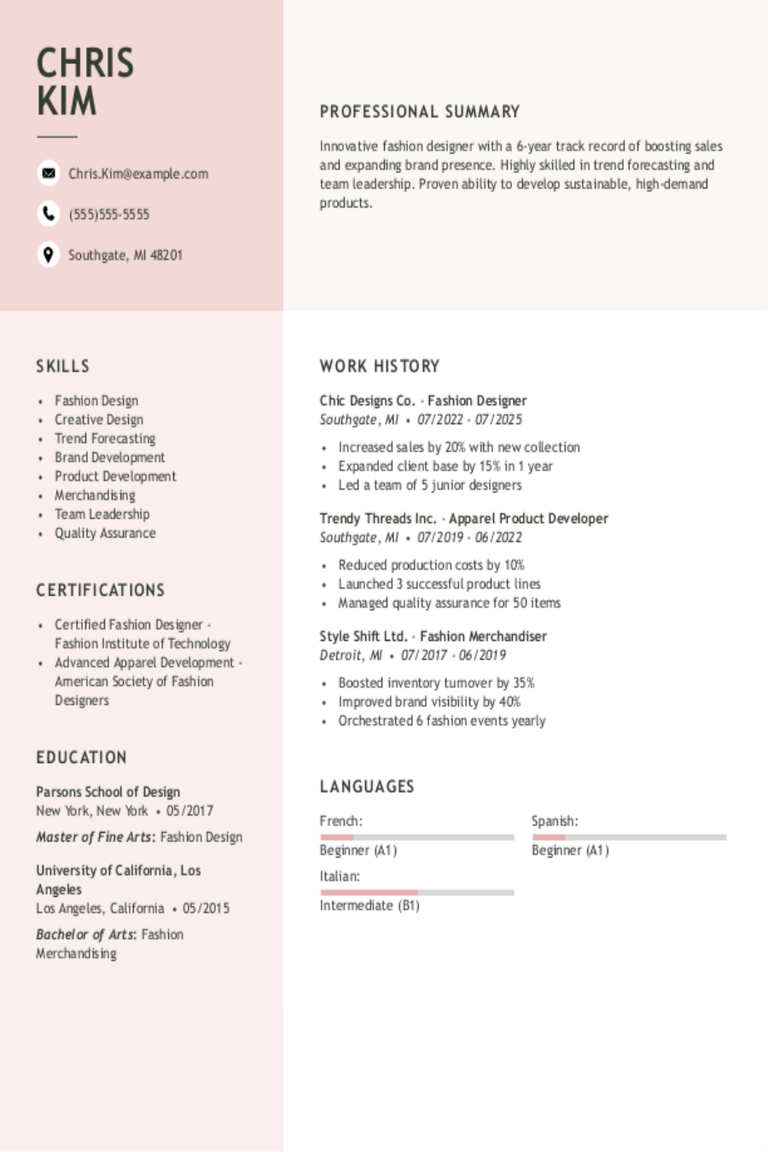
Fashion Resume Examples & Templates for 2025
Explore fashion resume examples to see how to highlight your design skills, trend awareness, and ability to work in fast-paced environments. Use these tips to showcase your creative projects and
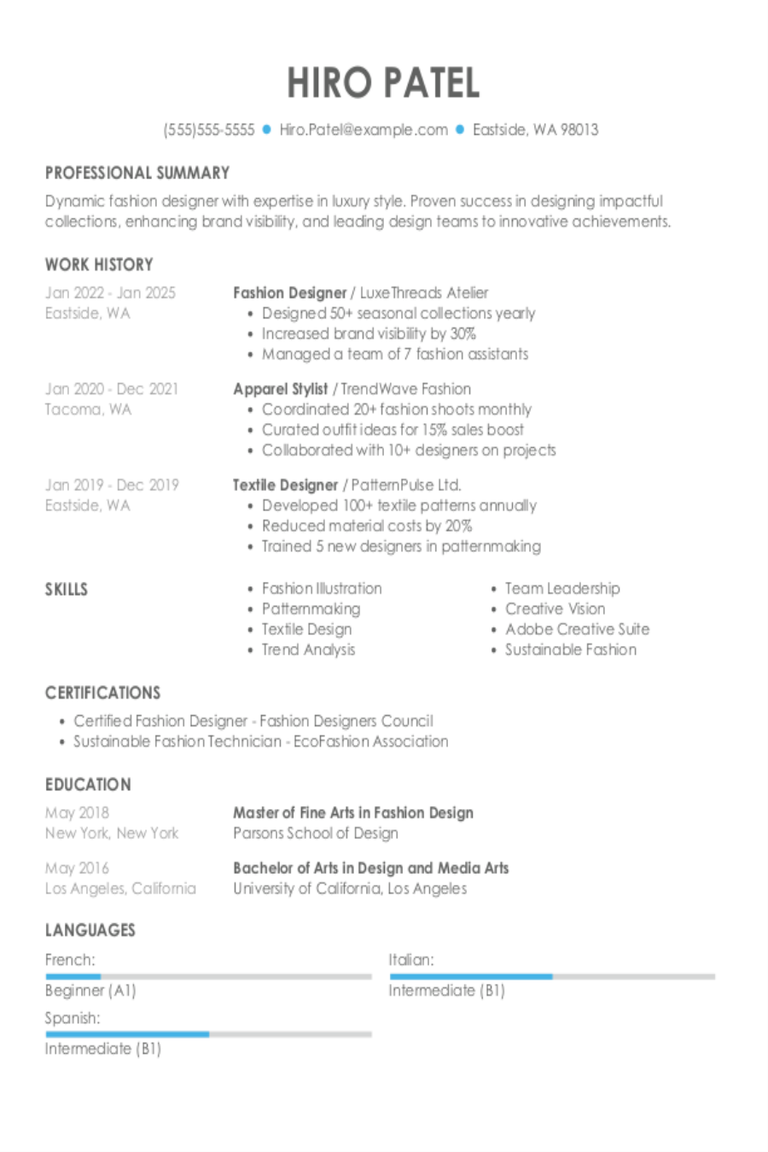
Fashion Designer Resume Examples & Templates for 2025
Discover fashion designer resume examples that show how to highlight your creativity, sketching skills, and knowledge of fabrics. Learn to showcase your design experience and make your fashion ideas stand
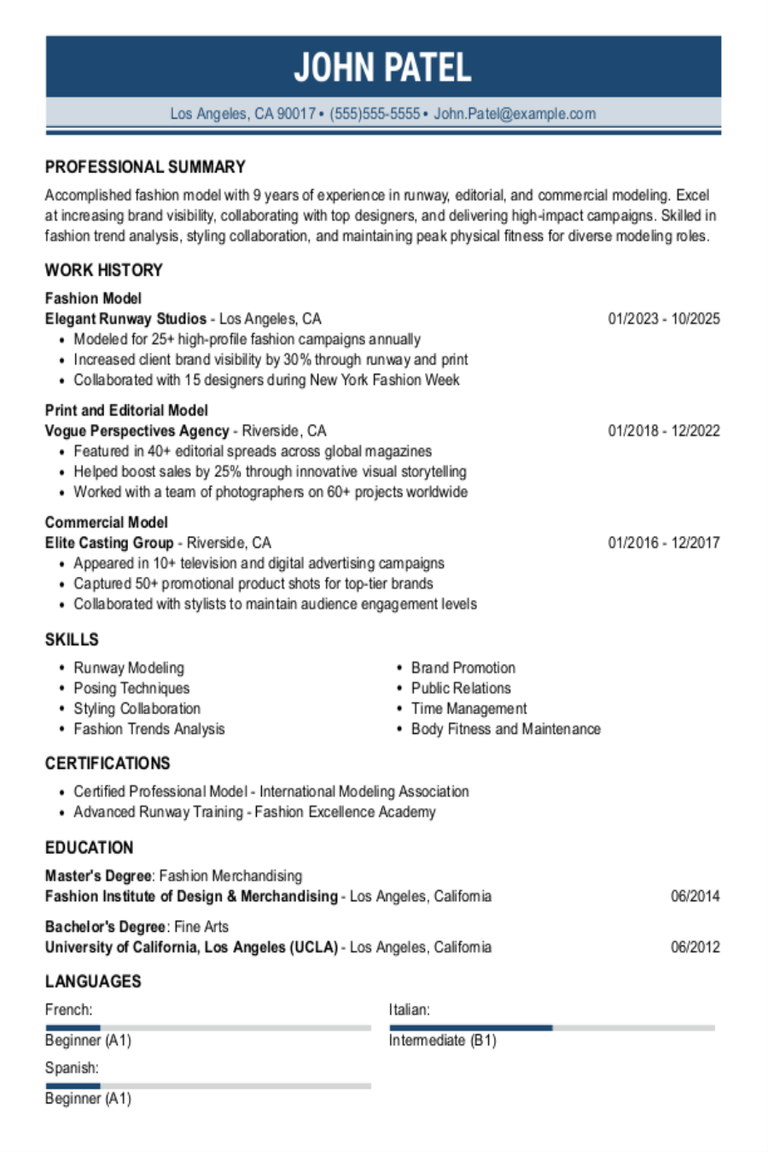
Fashion Model Resume Examples & Templates for 2025
Explore fashion model resume examples that emphasize posing abilities, runway experience, and collaborations with brands. These examples and tips can help you create a resume that showcases your unique style
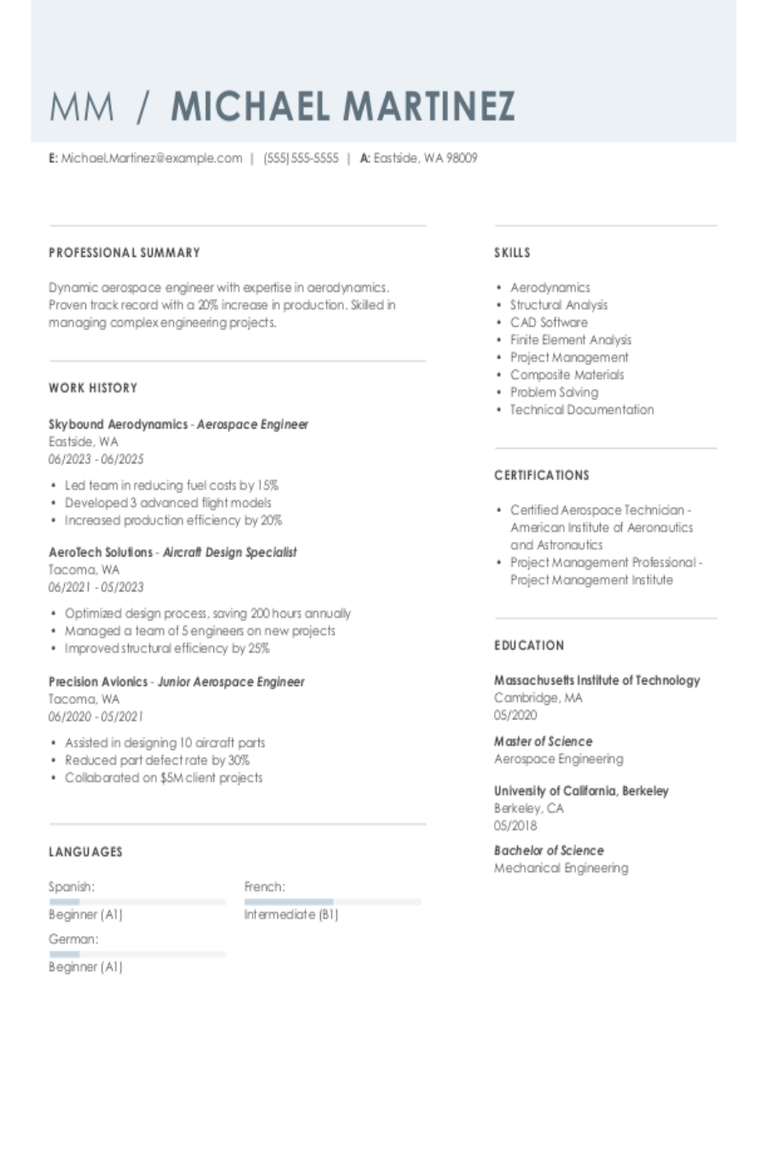
Aerospace Engineer Resume Examples & Templates for 2025
Explore aerospace engineer resume examples that show you how to highlight your experience designing aircraft, testing systems, and solving technical problems.Build my resumeImport existing resumeCustomize this templateWhy this resume
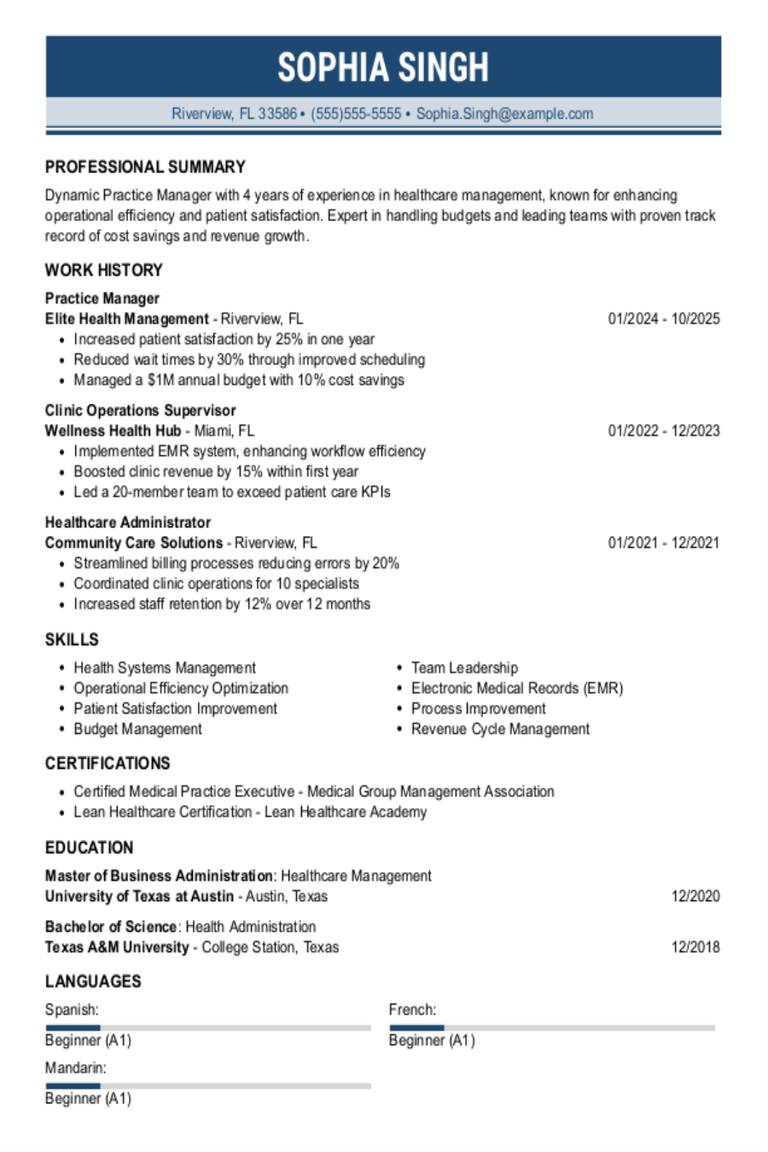
Practice Manager Resume Examples & Templates for 2025
Explore practice manager resume examples and tips to learn how to highlight your relevant skills and experience managing staff schedules and improving patient experiences.Build my resumeImport existing resumeCustomize this templateWhy
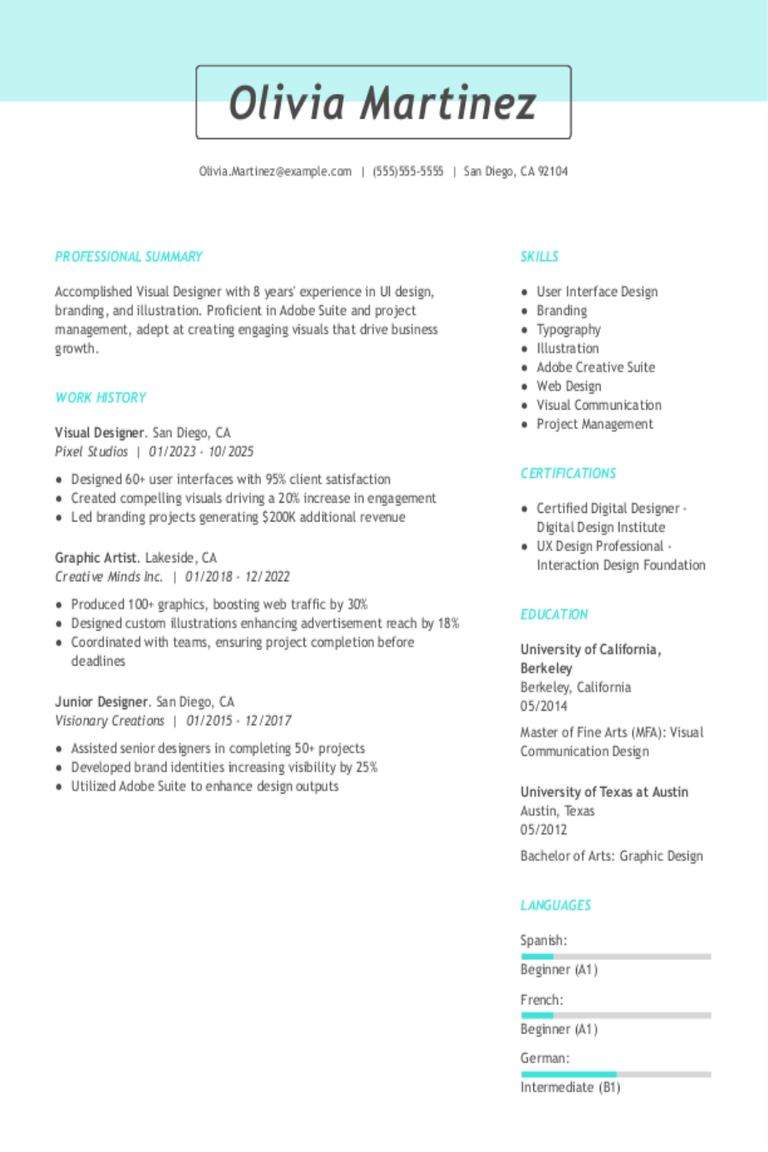
Visual Designer Resume Examples & Templates for 2025
Explore visual designer resume examples to learn how to showcase your creativity, highlight key design skills, and present projects that demonstrate your ability to turn ideas into visually compelling designs.Build
